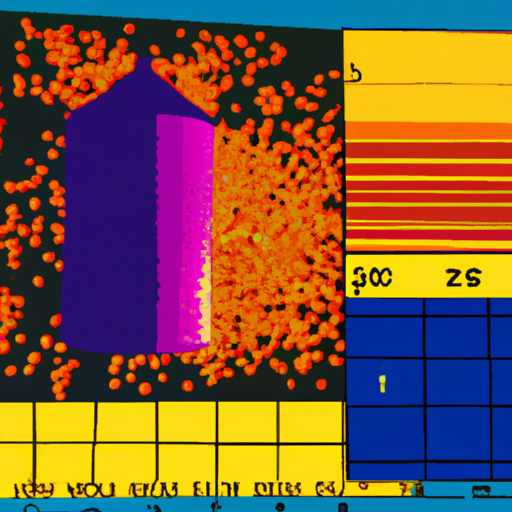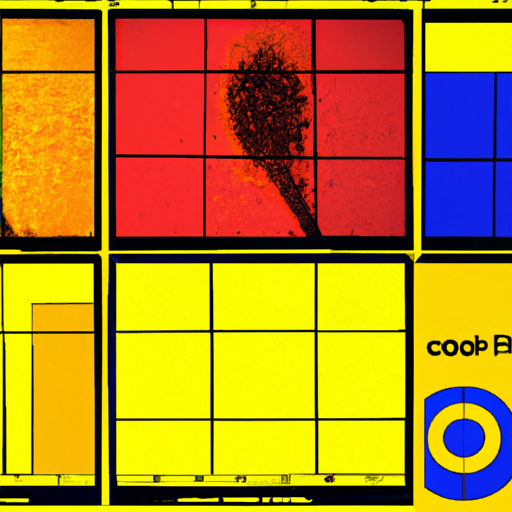
-
Table of Contents
- Visualizing Data in Scientific Illustrations
- The Importance of Visualizing Data
- Best Practices for Visualizing Data
- Choose the Right Visualization Technique
- Use Clear and Consistent Labels
- Provide Proper Scale and Units
- Choose Appropriate Colors and Symbols
- Simplify Complex Data
- Examples of Effective Data Visualization
- 1. The Hubble Space Telescope Images
- 2. DNA Double Helix Structure
- 3. Weather Maps
- Conclusion
Visualizing Data in Scientific Illustrations

Scientific illustrations play a crucial role in conveying complex data and concepts to a wide audience. They provide a visual representation of scientific information, making it easier for researchers, students, and the general public to understand and interpret data. Visualizing data in scientific illustrations involves the use of various techniques and tools to create compelling visuals that effectively communicate scientific findings. In this article, we will explore the importance of visualizing data in scientific illustrations and discuss some best practices and examples.
The Importance of Visualizing Data
Visualizing data is essential in scientific illustrations for several reasons:
- Enhanced comprehension: Visual representations help individuals understand complex data more easily than textual or numerical information alone. By presenting data visually, scientists can simplify complex concepts and make them accessible to a broader audience.
- Improved retention: Studies have shown that people remember visual information better than text. By incorporating visual elements into scientific illustrations, researchers can increase the likelihood that their findings will be remembered and understood.
- Effective communication: Visuals can transcend language barriers and communicate information more effectively than words alone. They allow scientists to convey complex ideas and data to a diverse audience, including those with limited scientific knowledge.
Best Practices for Visualizing Data
When visualizing data in scientific illustrations, it is important to follow best practices to ensure clarity and accuracy. Here are some key guidelines to consider:
Choose the Right Visualization Technique
There are various visualization techniques available, including graphs, charts, diagrams, and 3D models. The choice of technique depends on the type of data being presented and the intended message. For example, line graphs are suitable for showing trends over time, while bar charts are effective for comparing different categories.
Use Clear and Consistent Labels
Labels are crucial in scientific illustrations as they provide context and help readers understand the data being presented. It is important to use clear and concise labels that accurately describe the information. Additionally, ensure consistency in labeling across different parts of the illustration to avoid confusion.
Provide Proper Scale and Units
When presenting quantitative data, it is essential to provide a proper scale and units of measurement. This allows readers to accurately interpret the data and make meaningful comparisons. For example, if presenting data on temperature, clearly indicate whether it is in Celsius or Fahrenheit.
Choose Appropriate Colors and Symbols
The choice of colors and symbols can significantly impact the effectiveness of a scientific illustration. Use colors that are visually appealing and easily distinguishable. Avoid using colors that may cause confusion or misinterpretation. Similarly, choose symbols that are intuitive and widely recognized to ensure clarity.
Simplify Complex Data
Complex data can be overwhelming for readers, especially those without a scientific background. Simplify complex data by breaking it down into smaller, more manageable components. Use visual cues such as arrows, annotations, and callouts to guide readers through the information and highlight key points.
Examples of Effective Data Visualization
Let’s explore some examples of scientific illustrations that effectively visualize data:
1. The Hubble Space Telescope Images
The Hubble Space Telescope has produced stunning images of celestial objects, capturing the imagination of millions of people worldwide. These images effectively visualize complex astronomical data, allowing scientists and the general public to explore the universe in a visually captivating way.
2. DNA Double Helix Structure
The visualization of the DNA double helix structure by James Watson and Francis Crick is a classic example of effective data visualization. Their illustration, based on X-ray crystallography data, provided a clear and concise representation of the DNA molecule’s structure, leading to a breakthrough in our understanding of genetics.
3. Weather Maps
Weather maps are a common example of data visualization in meteorology. By using various symbols, colors, and contour lines, weather maps effectively communicate complex atmospheric data, such as temperature, pressure, and precipitation patterns, to meteorologists and the general public.
Conclusion
Visualizing data in scientific illustrations is crucial for effective communication and understanding of complex scientific concepts. By choosing the right visualization techniques, using clear labels and units, and simplifying complex data, scientists can create compelling visuals that enhance comprehension and retention. Examples such as the Hubble Space Telescope images, the DNA double helix structure, and weather maps demonstrate the power of visualizing data in scientific illustrations. By incorporating these best practices and examples, scientists can effectively communicate their findings to a wide audience and inspire further exploration and discovery.
